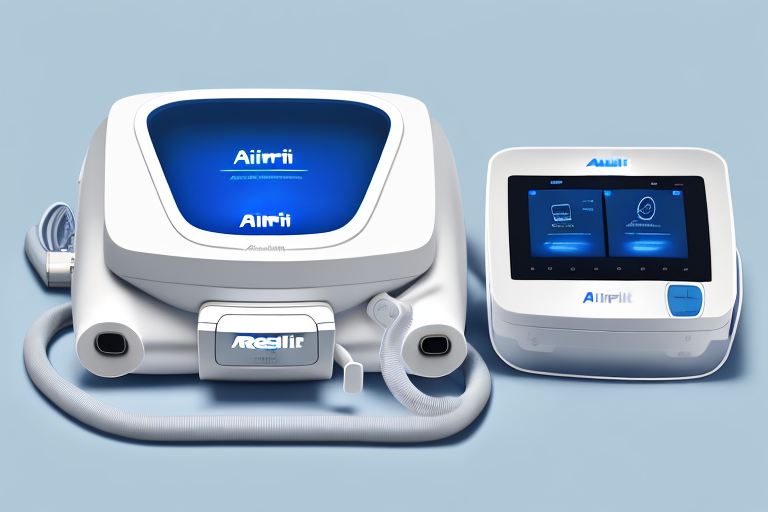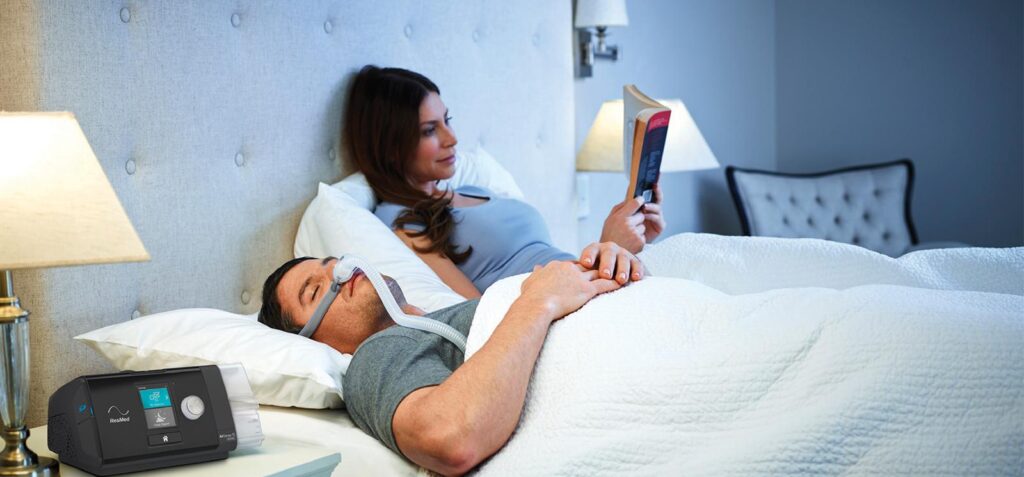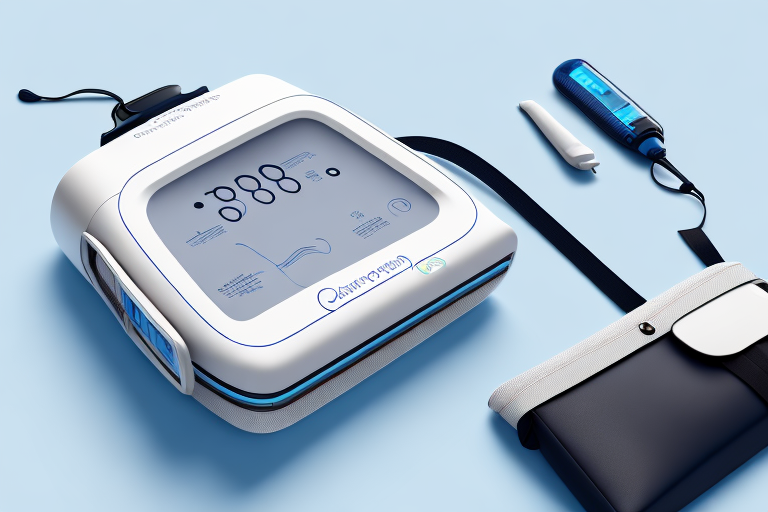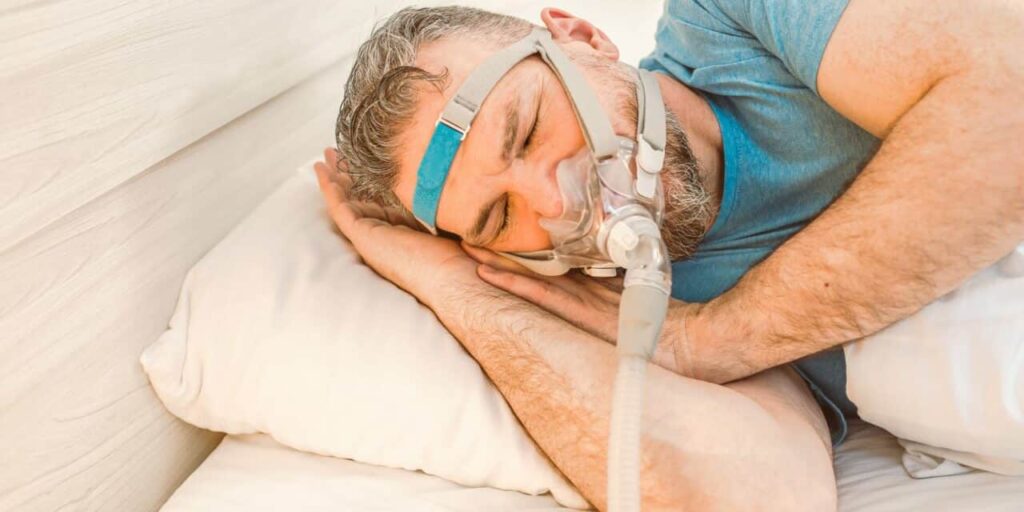In recent years, there have been significant advancements in the field of respiratory services, especially in the realm of Continuous Positive Airway Pressure (CPAP) machines. These devices have revolutionized the treatment of sleep apnea, a condition that affects millions of people worldwide. By delivering a constant flow of air pressure to keep the airways open during sleep, CPAP machines improve breathing and ensure uninterrupted rest.
Understanding the Basics of CPAP Machines
Sleep apnea is a serious sleep disorder characterized by the recurrent cessation of breathing during sleep. It can lead to a range of health issues, including daytime fatigue, high blood pressure, and cardiovascular problems. CPAP machines online have become the gold standard for managing sleep apnea effectively.
Sleep apnea affects millions of people worldwide, and its impact on daily life cannot be underestimated. Imagine waking up multiple times throughout the night, gasping for air and feeling completely exhausted the next day. This is the reality for individuals with sleep apnea. Fortunately, CPAP machines offer a solution that can significantly improve their quality of life.
The Role of CPAP Machines in Sleep Apnea Treatment
CPAP machines work by delivering a continuous stream of pressurized air through a mask that covers the nose and/or mouth. This air pressure acts as a splint, keeping the airways open and allowing patients to breathe freely throughout the night. By preventing apnea episodes, CPAP machines help patients achieve a restful night’s sleep and alleviate symptoms associated with sleep apnea.

It’s important to note that CPAP machines are not a cure for sleep apnea. They are a treatment option that effectively manages the condition, allowing individuals to experience improved sleep and better overall health. Compliance with CPAP therapy is crucial for long-term success in managing sleep apnea.
Key Components of a CPAP Machine
A CPAP machine consists of several essential components. The motor, located in the main unit, generates the airflow. This airflow is then conditioned by a humidifier, which adds moisture to prevent dryness and irritation in the airways. The pressurized air is delivered through a tube to a mask, which is available in various styles and sizes to suit individual preferences and comfort levels.
The motor of a CPAP machine is designed to be quiet and efficient, ensuring a peaceful sleep environment. The humidifier component plays a crucial role in enhancing comfort during therapy. Dry air can cause nasal congestion and discomfort, but the humidifier ensures that the air delivered by the machine is moisturized, making the therapy more tolerable.
Choosing the right mask is essential for successful CPAP therapy. There are different types of masks available, including nasal masks, full-face masks, and nasal pillow masks. Each mask style has its advantages and is designed to cater to different needs. Some individuals may prefer the freedom of a nasal pillow mask, while others may find a full-face mask more comfortable. It’s important to work closely with a healthcare professional to determine the most suitable mask for individual needs.
In conclusion, CPAP machines play a vital role in managing sleep apnea and improving the quality of life for individuals affected by this condition. By delivering a continuous stream of pressurized air, CPAP machines keep the airways open, preventing apnea episodes and allowing for a restful night’s sleep. Understanding the basics of CPAP machines and their components is essential for individuals seeking effective sleep apnea treatment.
The Evolution of CPAP Machines
Early CPAP Machines and Their Limitations
When CPAP therapy was first introduced, the machines were relatively bulky and limited in terms of functionality. Patients found them uncomfortable and cumbersome to use, often resulting in poor compliance. However, advancements in technology have led to significant improvements in CPAP machines.
One of the major limitations of early CPAP machines was their size. These machines were often large and heavy, making them difficult to transport and use while traveling. Patients had to rely on stationary machines, limiting their mobility and freedom.
Moreover, early CPAP machines lacked the advanced algorithms that are now present in modern devices. These algorithms monitor and respond to patients’ breathing patterns, ensuring that the therapy is delivered effectively. Without this feature, patients had to manually adjust the pressure levels, which often led to suboptimal treatment outcomes.
Another drawback of early CPAP machines was the noise they produced. The loud humming and whirring sounds made it challenging for users to fall asleep and stay asleep throughout the night. This resulted in disrupted sleep and reduced the overall effectiveness of the therapy.

Modern CPAP Machines: A Leap Forward
Modern CPAP machines are compact, lightweight, and feature advanced algorithms that monitor and respond to patients’ breathing patterns. They offer customizable settings, allowing healthcare providers to adjust the pressure levels to suit individual needs. Additionally, these machines are designed to minimize noise, creating a more peaceful sleeping environment for users.
One of the most significant advancements in modern CPAP machines is their size and portability. These devices are now much smaller and lighter, making them easier to carry and use while traveling. Patients no longer have to compromise their therapy when they are away from home.
Furthermore, the advanced algorithms in modern CPAP machines have revolutionized the effectiveness of the therapy. These algorithms continuously monitor the patient’s breathing patterns and automatically adjust the pressure levels to ensure optimal treatment. This not only improves the patient’s comfort but also enhances the overall effectiveness of the therapy.
In addition to the improved functionality, modern CPAP machines also prioritize the user’s comfort. These devices are designed to minimize noise, allowing users to sleep peacefully without any disturbances. The reduction in noise levels has a positive impact on sleep quality, ensuring that users can reap the full benefits of CPAP therapy.
In conclusion, the evolution of CPAP machines has brought about significant improvements in terms of size, functionality, and user comfort. The transition from bulky and limited devices to compact and advanced machines has revolutionized the effectiveness of CPAP therapy. With these advancements, patients can now experience a more comfortable and efficient treatment, leading to better compliance and overall health outcomes.
Latest Technological Advancements in CPAP Machines
Smart CPAP Machines: Integration with Technology
One of the most notable advancements in CPAP technology is the integration of smart features. These machines can sync with smartphone apps and other devices, providing users with real-time data on their sleep patterns and therapy progress. Smart CPAP machines also offer wireless connectivity, allowing for seamless updates and remote monitoring by healthcare professionals.
With the integration of smart features, CPAP machines have become more than just a medical device. They have transformed into a comprehensive sleep management system. The smartphone apps that accompany these machines provide users with detailed insights into their sleep patterns, including information on the duration and quality of their sleep, as well as the effectiveness of their therapy. This data can be easily accessed and analyzed, empowering users to take control of their sleep health.
Furthermore, the wireless connectivity of smart CPAP machines has revolutionized the way healthcare professionals monitor and manage their patients’ therapy. With remote monitoring capabilities, doctors can now access real-time data on their patients’ therapy progress, allowing for timely interventions and adjustments. This not only improves patient care but also reduces the need for frequent in-person visits, making CPAP therapy more convenient and accessible for patients.

Advancements in Comfort and User Experience
Manufacturers have made significant efforts to enhance the comfort and user experience of CPAP therapy. This includes incorporating features such as adjustable headgear, softer cushioning materials, and masks with minimal contact points.
Adjustable headgear is a game-changer for CPAP users, as it allows for a personalized fit that ensures maximum comfort throughout the night. With adjustable straps and buckles, users can easily customize the tightness and positioning of the headgear, eliminating any discomfort or pressure points.
In addition to adjustable headgear, manufacturers have also focused on developing softer cushioning materials for CPAP masks. These materials are gentle on the skin and reduce the likelihood of skin irritation or redness. They also provide a better seal, minimizing air leaks and maximizing the effectiveness of the therapy.
Another significant advancement in comfort and user experience is the introduction of masks with minimal contact points. Traditional CPAP masks cover a large portion of the face, which can be claustrophobic and uncomfortable for some users. However, newer mask designs have minimized the contact points, allowing for a more open and less restrictive feel. This not only improves comfort but also makes it easier for users to read or watch TV before falling asleep.
By prioritizing comfort and user experience, manufacturers have successfully addressed one of the main challenges of CPAP therapy – compliance. Many individuals struggle to adhere to their therapy due to discomfort or inconvenience. However, with these advancements, CPAP therapy has become more user-friendly, encouraging patients to stay consistent with their treatment and ultimately improving their sleep quality and overall well-being.
Exploring the Future of CPAP Machines
Predicted Developments in CPAP Technology
The future holds exciting possibilities for further advancements in CPAP technology. Researchers are actively exploring the integration of artificial intelligence and machine learning algorithms into CPAP machines. This could enable personalized therapy that adapts in real-time to meet the unique needs of each user. Additionally, advancements in miniaturization and battery technology may lead to more portable and wearable CPAP devices.
The Impact of Future Advancements on Patients
As CPAP technology continues to evolve, patients can expect improved treatment outcomes, enhanced comfort, and greater convenience. These advancements will empower individuals with sleep apnea to manage their condition more effectively, leading to improved quality of life and overall well-being.
The Intersection of CPAP Machines and Respiratory Services
How CPAP Machines Complement Respiratory Services
CPAP machines play a vital role in respiratory services as they provide a non-invasive and effective treatment solution for sleep apnea. By partnering with respiratory service providers, patients can receive comprehensive support and guidance throughout their CPAP therapy journey. Respiratory therapists ensure proper mask fit, instruct on machine usage, and monitor progress to optimize treatment outcomes.
Enhancing Respiratory Services with Advanced CPAP Machines
The availability of advanced CPAP machines further enhances respiratory services. Patients can now access a wide range of features and options tailored to their specific needs. These advancements, coupled with expert guidance and education from respiratory therapists, lead to improved patient compliance, better therapy adherence, and ultimately, better respiratory health.In conclusion, the latest advancements in CPAP machines and respiratory services have transformed sleep apnea treatment, offering patients a more comfortable and effective solution to manage their condition. From the evolution of machines that are smaller and smarter to the integration of technology and the promise of future developments, CPAP therapy continues to improve lives and promote better respiratory health. With ongoing advancements and the support of respiratory service providers, patients can look forward to a future where sleep apnea is better managed, allowing them to enjoy a good night’s sleep and overall well-being.
Related: Navigating the World of CPAP Machines for Optimal Respiratory Wellness


